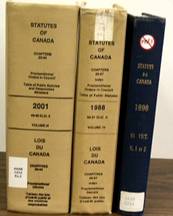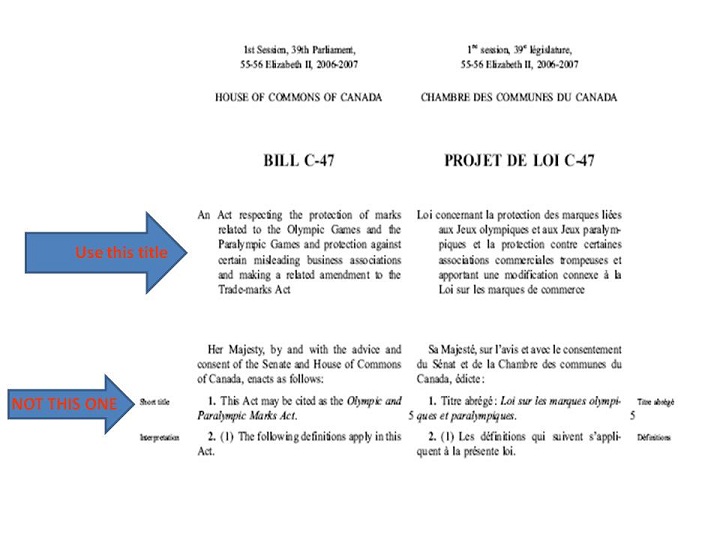Federal Legislation – How a Bill becomes Law
In general, a bill becomes law if it has passed through the following stages of the legislative process:
- Introduction
- First Reading
- Second Reading
- Committee Stage
- Report Stage
- Third Reading
- Royal Assent
First Reading
- Typically, at first reading, there is simply one or two speeches introducing the bill.
- EXAMPLE: Bill C-47 at First Reading (House of Commons, March 2, 2007):

Second Reading
- The bill is debated during second reading. This is where the real action takes place!
Committee stage
- Following debates at second reading, there is a vote to determine whether the bill should proceed to committee and which committee it should go to.
- Depending on the scope of the bill, committees will often have lengthy hearings (including witnesses, etc.), during which they debate the merits of the bill, as well as technicalities (such as wording, etc.).
- Before going to third reading, the Committee which analyzed the bill will report back to Parliament (the "report stage") with recommendations.
EXAMPLE: Bill C-47 as printed at Committee Stage (House of Commons, June 6, 2007):

Third Reading
- At third reading, the bill is again debated.
- If passed by the House of Commons, the bill is reprinted again, incorporating any changes made by the House at the third reading, and then sent to the Senate, where it starts the whole procedure anew.
EXAMPLE: Bill C-47 as passed by the House of Commons (June 14, 2007):

Royal Assent
- If a bill is then passed by the Senate unchanged, it will be given Royal Assent. If, however, the Senate makes changes to the bill, those changes must first be voted on and approved by the House.
- Royal Assent is given by the Governor General or his or her delegate.
- The number assigned to the bill changes to a chapter number (e.g., Bill C-47 became S.C. 2007, c. 25).
- The bill is printed in the Canada Gazette, Part III, on the Web and in the annual volume of Statutes of Canada.
EXAMPLE: Bill C-47 Royal Assent version (June 22, 2007)(39th Parliament - 1st Session (April 3, 2006-September 14, 2007)) - note the assigned chapter number 25:

EXAMPLE: An Act respecting the protection of marks related to the Olympic Games . . . Chapter 25 (Canada Gazette, Part III):

Note the Short Title: Olympic and Paralympic Marks Act
EXAMPLE: Olympic and Paralympic Marks Act (Statutes of Canada, 2007):

On the web: Department of Justice Canada: http://laws.justice.gc.ca
And in print: starts at SLR 4-1

Proclamation
- Finally, in order for a law to enter into force, it must be proclaimed after it has received Royal Assent.
- Typically, proclamation occurs by Order-In-Council.
- Usually, a law comes into force or takes effect on the day it receives Royal Assent (unless another date is set).
Title

